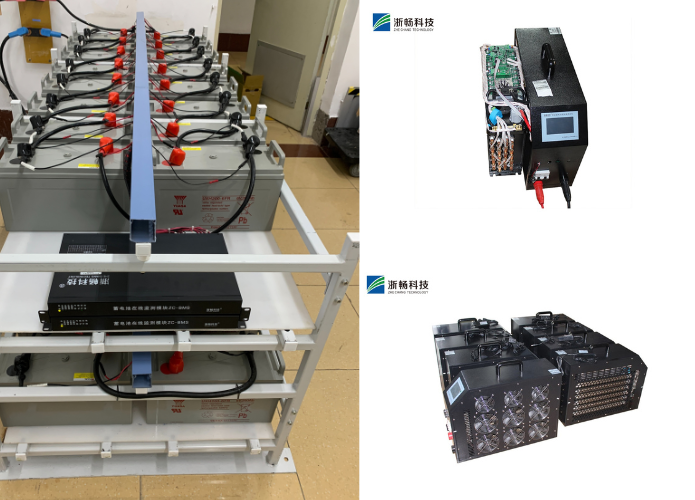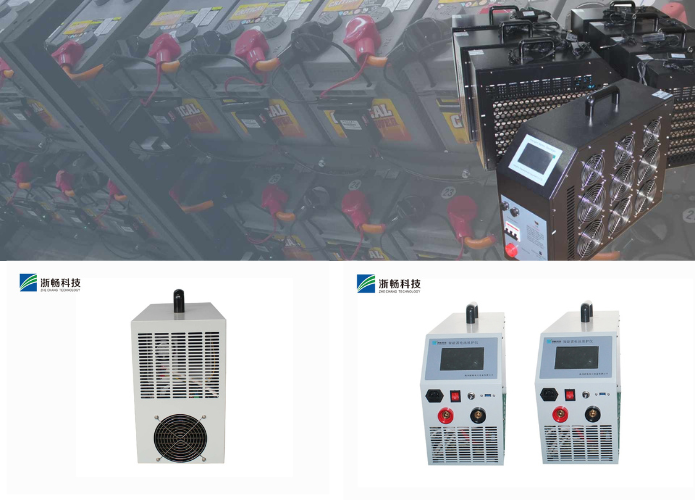What’s the Difference in Digital Battery Tester Prices?
Battery testers are invaluable tools for anyone dealing with batteries, whether for personal, automotive, or industrial applications. These devices provide critical information about a battery’s health, charge level, and overall performance, ensuring you get the most out of your power sources. However, when shopping for one, you’ll notice a significant range in prices—from budget-friendly options to professional-grade models. What drives these price differences? How do you ensure you get the best value for your money?
Understanding Digital Battery Testers: A Quick Overview
A digital battery tester is an electronic device that uses advanced circuitry and algorithms to measure various aspects of a battery’s performance. These devices are essential for ensuring the reliability of batteries, preventing unexpected failures, and maintaining optimal power supply.
Why Use a Digital Battery Tester?
- Prevent Failures: Detect potential battery problems before they cause malfunctions in your devices.
- Save Money: Identify when a battery truly needs replacement rather than replacing it prematurely.
- Improve Efficiency: Ensure batteries are operating at their full capacity for the best performance.
Digital testers come in a variety of designs, each catering to different user needs. For example:
- Portable Handheld Models: Compact and ideal for on-the-go use.
- Bench Testers: Larger units designed for workshops or industrial applications.
- Advanced Diagnostic Tools: High-tech testers with connectivity features for data logging.
Despite their similar purpose, prices vary significantly due to differences in build quality, functionality, and technology.

Key Factors Influencing Digital Battery Tester Price
Several elements determine the price of a digital battery tester. Let’s break these down in detail:
1. Build Quality and Durability
The materials and construction of a battery tester greatly impact its price.
- Low-End Models: These are typically made from lightweight plastic and may have a less robust design. While suitable for occasional home use, they might not endure heavy-duty applications or prolonged exposure to harsh conditions.
- High-End Models: Premium testers feature durable materials such as high-grade plastics or reinforced metal casings. These are designed to withstand frequent use in tough environments, such as automotive repair shops, where durability is crucial.
- Example: A $30 tester may work well in your garage, but a $300 tester is built to handle daily professional use.
2. Features and Functions
A significant factor influencing the price is the range of features offered.
- Basic Features: Inexpensive testers usually offer straightforward readings like voltage and charge percentage. These are enough for casual users checking household or car batteries.
- Advanced Features: Higher-priced models include:
- Load Testing: Simulates a real-world load to test the battery's ability to deliver power.
- Internal Resistance Testing: Measures the resistance within the battery, which affects its efficiency.
- Compatibility with Multiple Battery Types: Supports various chemistries such as lithium-ion, AGM, and lead-acid.
- Connectivity Options: Bluetooth or Wi-Fi connectivity allows users to store data on apps or share it remotely.
3. Accuracy and Precision
The accuracy of the readings can make a big difference in price:
- Budget Testers: Suitable for general readings with a margin of error.
- Professional Testers: Offer high precision with minimal deviation, ideal for tasks where accurate data is critical, such as automotive diagnostics.
4. Battery Compatibility
Not all testers work with every battery type:
- Low-Cost Testers: Often limited to 12V lead-acid car batteries.
- High-End Testers: Support a range of voltages (6V, 12V, 24V) and chemistries, making them more versatile for professional use.
5. Brand Reputation
Brand name plays a significant role:
- Premium Brands: Established names like Midtronics or CTEK charge more due to their proven quality and reliable customer support.
- Generic Brands: While cheaper, they may lack the same level of after-sales service or long-term durability.
6. Accessories and Add-Ons
Some testers come with extras, such as:
- Carrying cases
- Replacement clamps
- Software for detailed diagnostics
These extras can push up the price but also add significant value.
Price Categories for Digital Battery Testers
When shopping for a digital battery tester, it’s important to understand how the price range can influence the features, accuracy, and durability of the tester. Digital battery testers come in a variety of price categories, each offering different capabilities, making it essential to choose a tester that aligns with your specific needs and budget. Let’s break down the three main price categories: budget, mid-range, and high-end models.
Budget Range: $20–$50
- Features: Battery testers in the budget range typically offer basic functionality, focusing on simple voltage and charge testing. These testers are often designed for users who need quick, straightforward readings without requiring advanced diagnostics. The tests usually include voltage output and charge percentage, which can help you determine whether a battery needs charging or replacing.
- Best For: Home users or casual DIY enthusiasts who only need to check standard batteries like 12V car batteries or AA batteries occasionally. This price range is ideal for those who aren’t looking for advanced features but still want an affordable way to monitor battery health.
Limitations:
While budget testers are accessible, they come with some drawbacks:
- Limited Durability: Made from lighter, less durable materials, these testers may not withstand long-term, heavy use.
- Fewer Features: They generally lack advanced testing options, such as load testing, internal resistance measurement, or compatibility with multiple battery types.
- Less Accuracy: The precision of these testers is often lower, meaning they might not provide highly accurate readings, especially when assessing more complex battery types like AGM or lithium-ion batteries.
Despite these limitations, budget testers provide good value for users who need a simple tool for basic testing.
Mid-Range: $50–$150
- Features: Testers in this category strike a balance between affordability and functionality. In addition to basic voltage and charge testing, they often include enhanced features such as load testing. Load testing is a critical feature that simulates real-world battery usage, which helps assess a battery’s ability to perform under stress. Many mid-range testers also support a wider variety of battery types, including 6V, 12V, and 24V systems, and may be suitable for both automotive and marine applications.
- Best For: DIY enthusiasts, hobbyists, and semi-professional users who require more than just basic battery testing. These testers are perfect for those working with multiple types of batteries and need reliable readings that go beyond simple voltage checks. They are also a good option for small businesses or auto repair shops that need a tester capable of handling everyday tasks.
Advantages:
- Improved Accuracy: Mid-range testers offer better precision and more consistent results compared to budget models. This makes them more reliable for diagnosing battery health and lifespan.
- Additional Compatibility: They tend to support a wider range of battery chemistries and voltages, making them versatile for various tasks.
- More Features: Many models come with additional functions, such as enhanced display screens, data retention, and load testing capabilities, providing more detailed insights into a battery's condition.
While still more affordable than high-end models, mid-range testers provide a good balance of price and performance, making them an excellent choice for users who need reliable, accurate testing without breaking the bank.
High-End: $150 and Above
- Features: High-end digital battery testers are packed with advanced features and offer superior performance. These models often include wireless connectivity, data logging capabilities, and advanced diagnostics such as internal resistance testing. Internal resistance testing is crucial for evaluating battery efficiency, as it measures the resistance to current flow inside the battery, which affects its overall performance and lifespan. Many of these testers are designed to support a broad range of battery types, including specialized batteries used in electric vehicles, solar power systems, or industrial equipment.
- Best For: Professional mechanics, repair shops, and industries that require frequent, precise, and detailed battery diagnostics. High-end testers are designed to handle rigorous daily use and are ideal for users who need to assess the health of a wide variety of batteries with the highest level of accuracy. These testers are commonly found in professional environments where battery testing is a critical part of the workflow, such as in automotive, electronics, and renewable energy sectors.
Advantages:
- Advanced Diagnostics: High-end models provide deep insights into battery health, helping professionals identify problems early and avoid costly failures.
- Long-Lasting and Multi-Functional: These testers are built to last, with durable constructions that can withstand heavy use in demanding environments. They offer a range of features, including support for multiple battery chemistries and wireless data transfer for easy tracking.
- Precision: With high accuracy and precise measurements, high-end testers provide the most reliable data, which is crucial in professional settings where mistakes or errors can have significant consequences.
While high-end testers come with a steeper price tag, the value they provide in terms of features, accuracy, and longevity makes them worthwhile for professionals and industries requiring reliable and comprehensive battery testing.

Choosing the Right Digital Battery Tester for Your Needs
1. Determine Your Purpose
Are you a casual user needing occasional testing?
Do you run a business or work in an industry requiring daily diagnostics?
2. Check Compatibility
Ensure the tester supports the types of batteries you frequently use. For example, automotive professionals may require a model that works with both lead-acid and lithium-ion batteries.
3. Identify Necessary Features
If you only need basic voltage readings, a budget-friendly model is sufficient.
For advanced diagnostics, look for features like load testing, internal resistance testing, and data storage.
4. Consider Your Budget
Set a clear budget and explore options within your price range. Mid-range models often offer the best balance between cost and features.
Tips for Saving on Digital Battery Testers
- Look for Sales and Discounts
Shopping during seasonal sales like Black Friday or end-of-year promotions can help you snag a deal. - Compare Prices Across Retailers
Use price comparison websites to ensure you’re getting the best value. - Consider Refurbished Models
Refurbished testers often offer significant savings while maintaining functionality. - Purchase Bundles
Some brands sell testers with accessories or other tools at a discounted package price.
Conclusion
The digital battery tester price you pay reflects a combination of features, quality, and brand reputation. Budget models are ideal for occasional users who need basic functionality, while mid-range and high-end options cater to professionals and enthusiasts seeking precision and durability.
By understanding what influences the price and aligning your purchase with your needs, you can invest in a digital battery tester that delivers long-term value. Whether you’re checking car batteries at home or performing diagnostics in a workshop, there’s a tester out there to meet your expectations without breaking the bank.
Popular Battery Tester
Popular Battery Tester
Latest News
Latest News


Get Price of Battery Tester
Get Price of Battery Tester
Address:
Floor 3, Building 1, No.1418-60, Moganshan road, Hangzhou city, Zhejiang Province, China.310015

















































